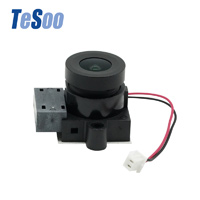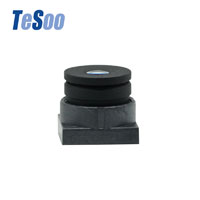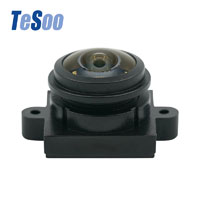Car-Grade Lenses in Different Application Positions
Car camera lenses are the core optical components of cameras. In addition to basic requirements such as resistance to extreme hot and cold environments, durability, waterproofing, and dustproofing, the optical performance of lenses at different locations may vary.
Next, let's talk about the lens characteristics of different products, including front-view (ADAS), rear-view, surround-view, and interior-view (gesture recognition, face recognition (eye monitoring), etc.) as well as intelligent electronic mirrors.
Front-view camera lenses (including ADAS and automatic driving sensors)
The lens front view is mainly used in scenarios such as lane departure warning, intelligent high beam control, forward collision warning, speed limit warning, and ACC cruise control.
Its optical requirements are:
Continuous and stable focusing characteristics and thermal compensation characteristics that can maintain stability under different temperature conditions;
High transmittance, ensuring good imaging effect under low illumination conditions;
Clear imaging effect, effectively capturing and distinguishing object details;
Glare and ghosting control, able to improve strong light interference such as vehicle headlights.
Rear-view/surround-view car camera lenses
Rear view camera lens is used in parking assist, automatic parking, and other scenarios. Surround-view lenses expand the field of view on the basis of rear-view lenses, providing a complete view of the vehicle's environment and performing simple recognition.
The lens characteristics required for rear-view and surround-view sensors are similar and can be divided into the following points:
High waterproof performance;
Excellent temperature characteristics to ensure high-definition effects;
Distortion correction, providing more realistic scenes.
Interior-view car camera lenses
Interior-view sensors can be used in gesture recognition, human-computer interaction, and facial expression recognition (fatigue monitoring) scenarios.
Therefore, the interior-view sensor lens involves the problem of different wavelength bands. For different recognition purposes, different wavelength bands need to filter out a certain amount of light.
Intelligent electronic mirror car camera lenses
Intelligent electronic mirrors are divided into intelligent electronic rear-view mirrors (FDM) and intelligent external rear-view mirrors (CMS), with a view angle three times that of traditional rear-view mirrors.
Nowadays, globally, the policy of replacing vehicle external rear-view mirrors with cameras is being promoted.
The requirements for lenses of intelligent electronic rear-view mirrors are:
Popular Camera Lens
Hot Camera Lens Articles

 English
English 

